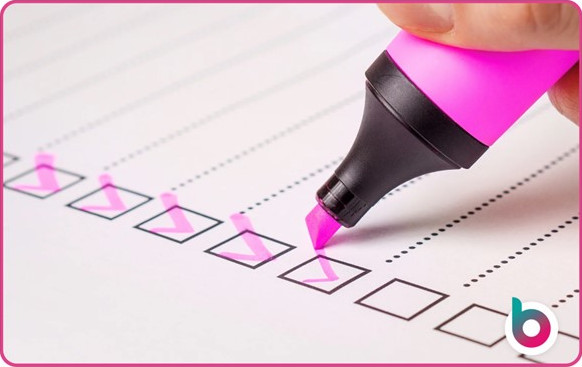It can be easy to be sucked into good marketing ploys with early years CPD courses, packages and workshops. The trick is to stay blinkered and choose CPD opportunities that will push you closer to achieving your 2025 goals.
When you choose CPD for your nursery, it can be likened to doing a food shop when you’re hungry. You’ll end up spending lots of money on shiny, attractive training courses, but when you take a step back, you’re no better off.
Your CPD plan should be robust enough to ignore shiny marketing techniques. If you have laser focus on your nursery’s goals and priorities, planning your CPD journey becomes simple.
In this article, we’ll help you do just that. We share the types of CPD you’ll want to include in your plan, how much to spend on your practitioners’ training and how to create a solid CPD plan for 2025.
Why is a CPD plan important in early years?
Aside from the statutory requirements for CPD in the early years, good CPD is essential to running a thriving nursery. When you equip your nursery team with high-quality skills and knowledge, your provision stays fresh and engaging for the children in your care.
Staff who feel appreciated, valued and invested in have higher morale and positivity. Working in childcare is not for the faint-hearted. The hours can be long and tiring, and there is little ‘downtime’ possible. This means your nursery team is expected to be their most engaging, interesting and supportive self as soon as they step foot into your nursery.
Early years staff retention and recruitment is an ongoing challenge all nursery managers and owners experience. Creating a robust CPD plan is essential for keeping your gold dust staff and further enhancing your team’s skills.
Nurseries with an exceptional CPD plan don’t see training as a tick-box exercise – it’s the foundation of all forward-thinking nurseries.

What are the types of CPD for nursery practitioners?
We can break early years CPD opportunities into four main categories:
- Statutory required training
- Training to enhance practitioner skills
- Training to develop pedagogy and approaches to learning
- Leadership development
All four areas of CPD can have different approaches, some may be delivered via online or in-person workshops, useful blogs and articles, or scenario-based staff meeting discussions.
There is no set method of CPD that your nursery should use, just ensure the delivery method allows to maximum engagement with the content and your practitioners look forward to furthering their learning in that area.
Statutory required CPD in EYFS
There are a number of mandatory EYFS CPD sessions. These cover topics like safeguarding, induction training, food hygiene training, paediatric first aid and administering medication.
Your team will need to have certification of attendance for most of these courses. It is helpful to store all your team’s training documents and notes in one place for monitoring and easy access during Ofsted visits.
Find out more about how Ofsted inspects safeguarding in early years

EYFS skills training for CPD
You may have heard the term soft skills. This refers to those skills that aren’t required to be an early years practitioner but are essential for a successful nursery.
For example, formal training is necessary to be included in child: adult ratios (like Level 2 or 3 nursery practitioner), but soft skills such as managing angry or upset parents fall into ‘nice to have’ skills.
Skill enhancement is what makes your nursery run smoothly – it focuses on everyday practices and interactions that elevate the quality of care and education the children receive.
Understanding and supporting children with Special Educational Needs and Disabilities (SEND) will fall into this category and can be essential for achieving true inclusive practice.
Some ideas of CPD training sessions that are under the skill enhancement umbrella:
- Building effective parent partnerships
- Using positive behaviour management approaches
- Reducing bullying behaviour
- Supporting children with PSED development

CPD for EYFS pedagogy
Staying ahead in early years often means adopting creative and evidence-based approaches to teaching and learning. Giving your practitioners access to CPD for early years pedagogy ensures your team are up-to-date with the latest educational research, adopting best practices into their teaching.
Here are some ideas for EYFS pedagogy training:
- Outdoor learning
- Early reading techniques
- Creative expression
- Loose parts play and the Curiosity Approach
- Trauma-based approach
- Early maths activities
EYFS leadership development
Nursery manager and leadership training is often an area of EYFS CPD that is forgotten. Training your leadership team to perform at their best, can’t be underrated.
Whether it is understanding nursery software to streamline your processes or receiving business coaching to build the most effective team– your leadership development is important.
We also know that a common Ofsted inspection question for 2024 surrounded the professional development of team members and what their improvement journey looked like. Identifying those who feel ready to move to the next leadership step, should be a priority for additional training.
Top Tip: Don’t forget about government-funded professional development courses like Early Years SENDCo for those who are interested in this field.
How to create a CPD plan for your nursery
There are six steps to creating an exceptional CPD plan for your nursery:

1. Start with a staff skills audit
When you are looking to supercharge your nursery profitability, the first step is to audit the skills available in your staff team (this includes you, too). Before deciding on a CPD plan, take stock of your team’s existing skills and knowledge.
A skills audit can help you:
- Identify areas where staff feel confident
- Highlight gaps or areas for improvement (like SEND support, speech and language or physical development knowledge)
- Pinpoint future leadership potential for succession planning
You can use staff surveys shared internally via your nursery management platform or through one-to-one meetings.
2. Include a variety of types of CPD
As we know, CPD comes in all different shapes and sizes. Some topics of learning can suit specific types of training. For example, when preparing for an Ofsted inspection, discussing possible questions you and your team may be asked in a staff meeting is likely to be one of the most effective.
There are times when scenario-based training is the most suitable type of CPD for your team. Safeguarding situations or real-life examples of confrontations with parents are well-suited to team discussions, putting your setting’s policies and procedures into practice.
Early years CPD may fit into one of the four categories:
- Statutory required training
- Training to enhance skills
- Innovative training
- Leadership development
3. Plan when the CPD will happen
Staff meetings are often the times when most CPD happens. However, as there are lots of online CPD training available for early years staff, your team can be flexible around your occupancy levels.
For example, if your nursery has a number of children absent due to sickness or holiday at the same time, you may find yourself overstaffed. If this happens, you can direct your practitioners to complete EYFS online CPD training – making the most of the quieter times.
Having visibility of staff rotas and your child: adult ratios can help make planning CPD sessions easier. Flexibility is key when implementing CPD plans without disrupting the daily running of your nursery.
4. Empower your staff and parents
Your practitioners and families are a valuable source of insight when planning CPD in your nursery. By consulting both groups regularly, you can ensure your CPD aligns with your nursery’s real needs and expectations– this is also a big tick for Ofsted ‘intent’.
Ask your practitioner team what training they feel would impact their ability to support all children. When your team have a say in their development, it boosts motivation and engagement– helping to retain your Level 2 and Level 3 practitioners.
Parents know their children best. By sending a simple survey to your families via the Parent App, you can gain insight into training and skills they feel would be beneficial for supporting their child.
For example, if a child with a hearing impairment is comfortable using Makaton (a version of sign language), those in the nursery room should complete simple Makaton training to best support the child with their development.
5. Align your CPD to your nursery budget e
Setting your 2025 budget is essential to increasing your profitability as a nursery. Some EYFS CPD courses look really engaging and interesting for your practitioners – but you can’t attend them all. It is important to stay focused on your nursery’s goal when it comes to purchasing CPD programmes and packages.
Setting yourself a realistic budget for paid CPD each year is the first step. If you don’t have a benchmark for how much you should be spending for CPD each year, go back through your previous year’s spending to find your figure and get an idea of your previous spending patterns.
When increasing your profitability, knowing your nursery’s benchmark for spending in each area is crucial. You can find more about how to optimise your nursery spending in our collaboration blog with Lucy Lewin.
Maintained primary schools spend around 3% of their school budget on staff training, although this pattern of spending has been declining in recent years. The amount your nursery invests in CPD relies on the areas of improvement you are tackling this year, how pressing they are and the quality and accessibility of the free resources available.
6. Review your CPD plan regularly
Once you have created a CPD plan for the year, it is not a done deal. Your plans should be a working document. It is good practice to regularly review your CPD journey in your nursery, especially after a practitioner has completed training or a workshop.
Ensure you have plans and processes in place to share the knowledge each training session builds – the value of the training significantly decreases if it isn’t shared with the rest of the team.
Top Tip: Don’t forget to share training courses your team has attended with your parents and families via your Parent App - it will boost their confidence in your team and reassure them their child is in the best hands.
How can Blossom help your CPD plans?
Blossom’s nursery management software makes planning and managing CPD effortless, helping you stay organised and focused on your 2025 goals.
Our Staffing and HR features allow for easy CPD and qualification tracking. Helping you to identify areas where staff need further development, and schedule future CPD sessions without disrupting your rota or ratios.
Blossom’s intuitive platform allows you to streamline the entire CPD process, from conducting skills audits to aligning training opportunities to your budget and priorities.
By integrating CPD planning with your day-to-day operations, Blossom ensures you’re always one step ahead in supporting your team’s growth and delivering exceptional care and education.
Want to learn more? Book a free demo slot to see our original and latest features.